How to Choose the Right Stock Pot For Your Kitchen
Buying a good stock pot, also called a stock or cooks pot, is important to every home cook because of its versatility.
Not only will you use it for making stocks and stock reductions, it will come in handy when you cook pasta, make soups, braise meats, make your famous homemade tomato sauce, and plenty more. So you want to buy something that will work well for every type of cooking you do and one that will hold up for many years to come.
What you are looking for are very similar to what you would be looking for in a soup pot. In fact, you really need just one pot for both stocks and soups depending on how much of each you are planning to make. Here are some important things to look at when choosing a stock pot.
What to look for in a good stock pot?
Making stock requires long cooking over low heat so you want a pot that’s big enough to make large batches of stock at the same time sturdy enough to handle a long cooking duration.
Size:
Stock pots typically come in sizes ranging as small as 6 qt. to as large as 20-qt. before getting into commercial sizes. Stock pots need to be larger than your soup pot because you usually make a larger batch of stock than you do soup but there is no reason to buy two separate pots.
You can easily make soup in a stock pot with room to spare, but you may come up short the other way around.I’m recommending you look at a 6-qt. – 12-qt. range so it will be versatile for your other cooking needs.
Shape:
As show in the picture on the left, a stock pot usually has a round base, deep straight sides and a cover. Although this shape is more important when making stocks and stock reductions, it works well for making soups too. Could you use a shorter, smaller, wider pan for making soups? Of course and depending on how much you are making you just may want to use a large sauce pan instead.
Structure:
No matter what type of pan you buy, you want it to have a thick, heavy bottom to prevent burning. This is especially true with stock. Soup requires time to cook so the pan will be sitting on the stove tip for long periods. You don’t want the ingredients to scorch and stick to the bottom because it is too thin or made of cheap materials.
Materials:
Companies like Calphalon created a “hard-anodizing” aluminum for cookware using an electrochemical method of preparing raw aluminum that was developed by NASA for the aerospace industry. Talk about cooking with George Jetson.
The end product is actually harder than stainless steel and non-reactive to acids. So you can see there are a lot of choices when it comes to materials. Which on you choose will depend on what’s available, cost and what feels good in your hand.
Conductivity:
What this means is the pots ability to transmit heat from the heat source to the food and do so both evenly and efficiently. Well-made stock pots are considered highly conductive when they can transfer heat evenly across the bottom and up the side so the food cooks the way it is supposed to.
You want the stock at the bottom of the pan to be cooking evenly with the stock at the top. Every metal conducts heat differently so that’s why its important to find the right match the type of pot you are using and the way you cook.
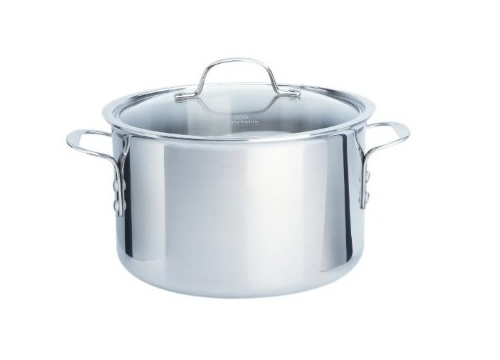
Handle:
Whether you are using it to make stock or just to boil some corn, you want a well constructed pot with a handle that you feel secure won’t fall off when you are lifting a pot of hot liquid. So look for stock pots with handles that are securely attached to the pot. So pick a pot that uses heavy screw or rivets with their handles.
Some of the new cookware on the market have handles that resist getting hot when using on your stove top. This is great if you want to move the pot from the burner to the sink but you want to be careful if you put it in the over for any reason. Cool resistant doesn’t mean cool proof. Always use your Silicone Oven Mitts when taking any cookware out of a hot oven.
Another think to look for in a handle is the shape and size. You want enough room to be able to grab with potholders and a comfortable shape for picking up.
What Do I Cook With
Personally, most of my pans are older Calphalon hard-anodized aluminum pans that are no longer on the market. I called Calphalon and spoke with an knowledgeable customer service person who told me these pans are still around in some specialty shops if I really wanted one.
But I don’t and that’s because I’ve tried a couple of their new pans, Calphalon One, an infused anodized pan that is not nonstick but because of the design have many of the qualities of nonstick but all the versatility of heavy gauge aluminum.
These pans are great and I highly recommend them. You can use them on the stove top, in the oven, use metal utensils, deglaze, sear foods and best of all they clean up fast and easy. They are also dishwasher safe and have a lifetime warranty. What more can you ask.
Other brands: There are many other excellent brands on the market. I started with Calphalon years ago and just stuck with them but I speak with other home cooks and they tell me they like All-Clad, Anolon, Circulon, Emerilware, Le Creuset, Farberware just to name a few.
Buying Sets or Individual Pots: Some people like to buy the whole set at once and get it over with. When I started buying cookware, I couldn’t afford to do it that way so I started with one 4 1/2 qt. sauce pan and added on.
I had some really cheap pots that I bought right out of school but they didn’t hold up very well and were awful to cook with. They’re most likely buried in some box in the garage somewhere. Just can’t seem to throw them out.
The other reason I’m glad I didn’t buy them all at once is because they keep coming up with new materials, new designs and new features. It’s great to find a new piece of cookware under the tree at Christmas and find out out some new feature that makes using it easier.

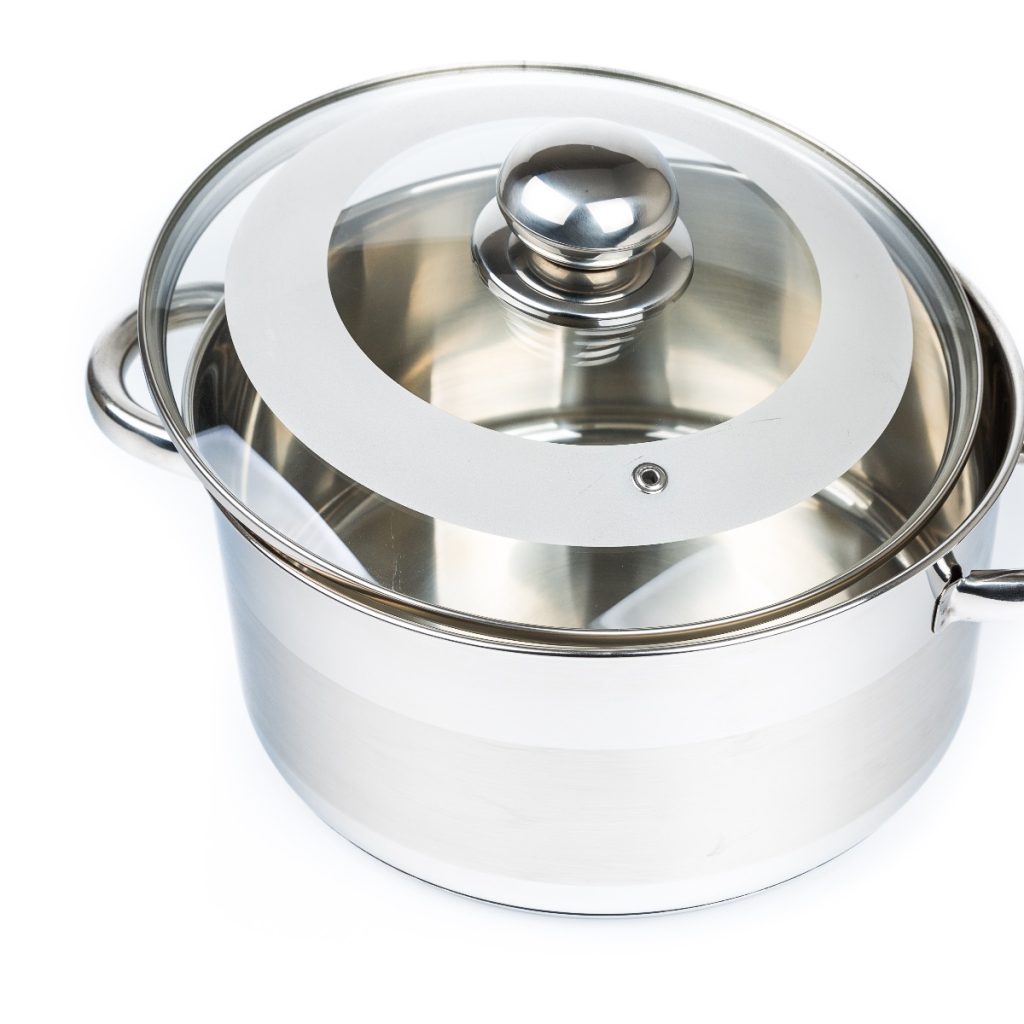
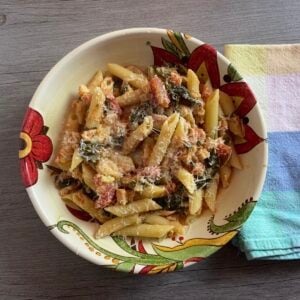



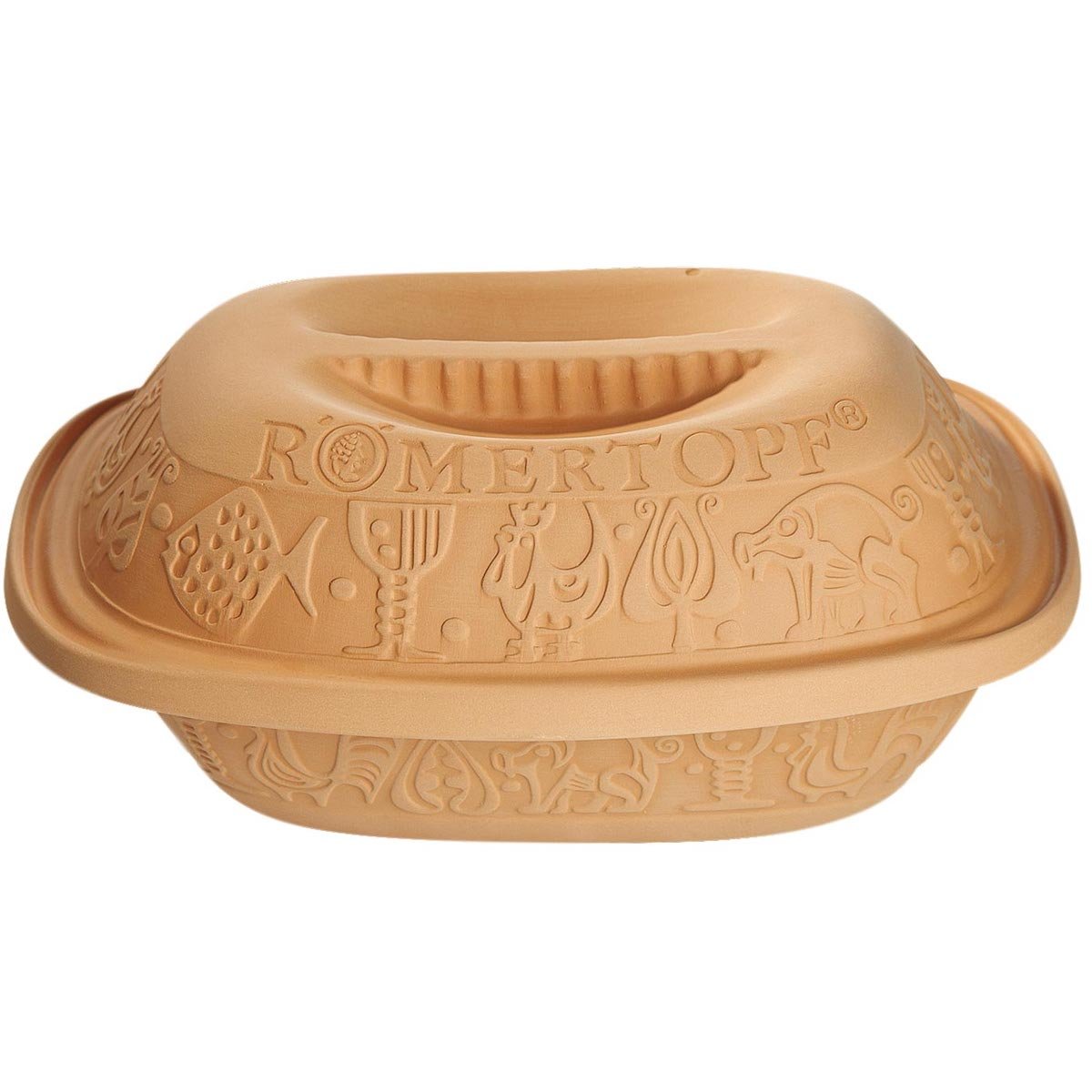
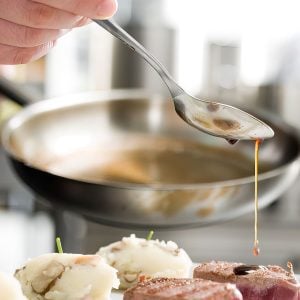
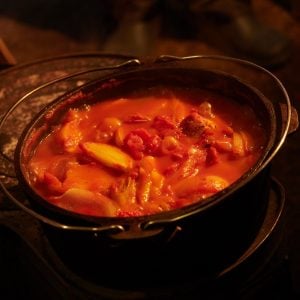
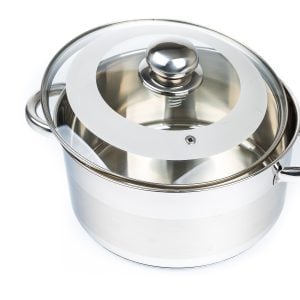
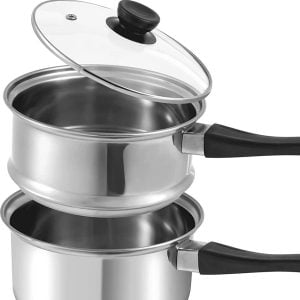
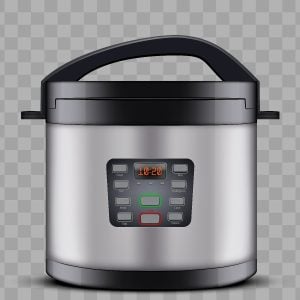
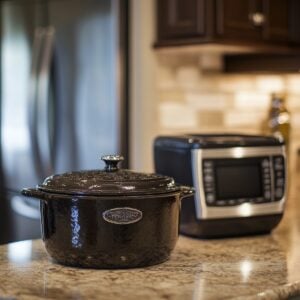
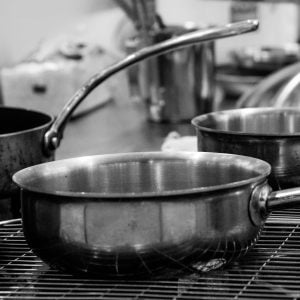


7 Responses
First of all, thank you so much for the information you gave on choosing a good stock pot. We’re trying to buy a 20qt for our son and daughter in law as a house warming gift for their first house. My son is a little like me and is cooking lots of chicken pot pie (chicken and dumplings as some would call it) but for us easterners it’s pot pie.lol and he’ll also be cooking my Mom’s spaghetti sauce too. which needs a very large pot. He cook’s for quite a few people in his church and is trying to do his cooking in an 8qt pot. Not a good move when making large batches as you know. I haven’t bought a new stock pot in years and was looking for up to date information before I bought again.
Your information was on the money as far as being informative. So thank you. You’ve backed up the knowlege I pretty much had but you refreshed my memory.
Now as far as the comment that Jim Urick made. If you don’t mind, common Jim not everyone that writes a blog is a professional.. nor has the means of receiving help with writing his/her blogs. I think we’re blessed that he put’s the information out here for all of us to see. And he takes the time away from his family to write about his recipes and gives quite useful information on all sorts of things if we just ask him. If something isn’t quite used in a proper context or spelled right.. well I think we got the jist of what he is saying. Right? Hey I’m sure i spelled quite a few things wrong here.. but hey.. i’m blind.. and I don’t think anyone really give a hoot about that either.. i’m just blessed that i came looking for information and found it! and this wonderful man was here to give solid information that i could understand without saying huh? and having to go on a wild goosehunt looking for meanings and so on. Right? Just saying. Thanks gentlemen for your time. And bless you both!
Thank you very much for your comments Debbie.
I have read several articles about choosing the “correct” pot. But I haven’t seen anyone address the size of the pot in relation to the burners. I have an 8 qt pot, and it covers the burner completely. If I bought a 20 qt pot, it would extend way beyond the burner, and I think would heat unevenly. Do you have any input to this issue?
Great question Michael and one I will look into in more detail. I too have some pans that are much bigger than others so I am very careful to place them right in the center of the heat so they don’t burn unevenly but I never thought about the relation of the size of the pan to the burner. I’m guessing you have to consider the amount of time it takes to get a larger pan hot before you start cooking and then keeping it hot. Then you would have to take into consideration the stove top’s BTUs. On most stoves I’ve seen, there are larger and smaller burners. Even the electric stove I grew up with had 2 or 3 different size burners but I can’t imagine ever putting a giant commercial pot on any of those burners. Then again, I remember my dad cooking live lobsters in a giant pot on our childhood 4 burner electric stove. It must of taken forever to get that water hot. I’ll do some research and see what I can find out but if anyone has some input, please let us know.
I personally believe that most of the household cooking is done by using 12 qt stock pots or smaller. Therefore, there will not be any pot-to-burner relationship problem. For small pots I would use low flame, for slightly larger ones I would use medium flame. However, it is with the 12 qt pot that I face a problem: if I want to cook evenly, I must use the high flame to cover the entire bottom of the pot, but that runs contrary to all manufacturers’ warnings telling me not to use high but medium to low flame on the pots. Here there’s not much I can do but to use medium flame, the relationship notwithstanding.
I loved all the pot information. I have had the same stock pot since I was a kid in the 70s and it was 20 qtr pot. Every homemade sauce in my life till 3 yrs ago was cooked in that thing. Well long story short I was robbed during a move and they got my pan. I’m beyond heartbroken and everything I find I can afford just won’t do. We end up with a total of 18 qtrs of sauce when it’s done cooking 24 plus hours. We have cooked on gas and electric burns. When I had the pan took from me. I started cooking my sauce in a old roaster on top of two burners electric and gas and it worked great. However I have the old alum roasters and it cooks it just as great just can’t make my whole batch like before. And I so need a large sauce pan. Thanks for all the great info. But I want you to know the 20 plus pans cook just as good you do cook them a lot longer and believe it or not that is how it goes from sauce to gravy and than you know what the old folks was talking about. The sauce will go from red to a brownish and than that is the old italy way of cooking your gravy.
Marcie, sorry to hear about your stock pot being stolen. Thank you for all your information about making sauce (gravy). Much appreciated.